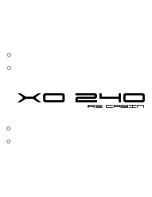
52
OPERATION
Navigational Rules
Non-Motorized Craft
Non-motorized craft (sailboats, canoes, etc.) are
normally given the right-of-way, with the following
exceptions:
S
When a non-motorized craft is overtaking a power
vessel, the power vessel has the right-of-way.
S
Non-motorized craft should stay clear of fishing ves-
sels.
S
In a narrow channel, a non-motorized craft should
not interfere with the safe passage of a power vessel.
Fishing Vessel Right-of-Way
All vessels that are fishing with nets, lines or trawls are
considered “fishing vessels” under International Rules.
Vessels with trolling lines are not considered fishing
vessels. Fishing vessels have the right-of-way,
regardless of position. However, they must not
interfere with the passage of other vessels in narrow
channels.
Reading Buoys and Markers
United States waters are marked for safe navigation
through the use of buoys and markers with various
shapes, colors, numbers and lights to guide boaters.
The same is true for waters in particular states.
Marking may vary by geographic location. Consult
local authorities before riding your watercraft in
unfamiliar waters.
Launch Ramp Etiquette
Be considerate and efficient when launching your
watercraft at a public landing. Prepare your craft in
advance, and perform all safety checks before arriving
at the landing area. Launch as quickly as possible.
https://www.boat-manuals.com/
















































